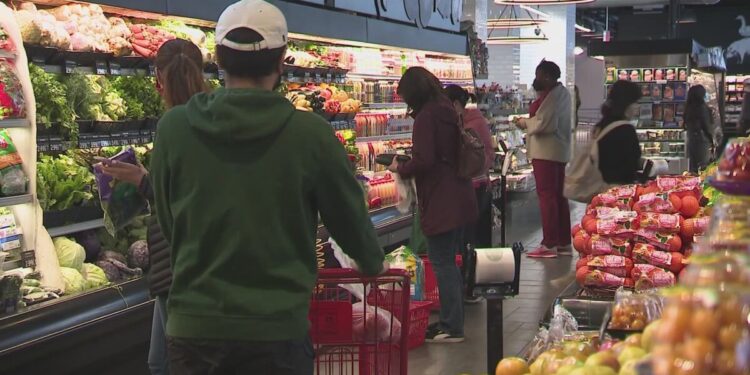Federal officials have announced that Supplemental Nutrition Assistance Program benefits will not be distributed on November 1, affecting millions of low-income Americans who depend on the assistance to purchase food.
The U.S. Department of Agriculture posted the notice after the Trump administration declined to use approximately $5 billion in available contingency funding to continue SNAP payments into next month. The program currently serves roughly one in eight Americans with grocery assistance.
“Bottom line, the well has run dry,” the USDA statement reads. “At this time, there will be no benefits issued November 01. We are approaching an inflection point for Senate Democrats.”
The government shutdown entered its second month on October 1, making it the second-longest funding lapse in U.S. history. Administration officials ensured October benefits were distributed, but November represents a critical threshold where food assistance to vulnerable populations will cease without congressional action.
Political gridlock centers on disputes over Affordable Care Act subsidy extensions. Democrats refuse to fund government operations until Republicans negotiate healthcare subsidies, while Republicans demand government reopening before any policy discussions begin.
Congressional Democrats sent letters to Agriculture Secretary Brooke Rollins urging deployment of contingency reserves to maintain November benefit payments.
A USDA memorandum released Friday states that contingency funding cannot legally support regular monthly benefits. Officials designated those reserves for disaster response situations requiring rapid mobilization.
The memo cited Hurricane Melissa, currently strengthening to major hurricane status, as justification for preserving emergency funds rather than directing them toward routine benefit payments.
State governments across partisan lines have expressed alarm about families losing food assistance.
Several states announced plans to temporarily fund SNAP benefits if federal payments stop, though federal guidance suggests such arrangements may violate program rules. The USDA memo explicitly states the federal government will not reimburse states that independently fund benefits during the shutdown.
States including Arkansas and Oklahoma are instructing benefit recipients to locate food pantries and charitable organizations that provide emergency food assistance.
Senator Chris Murphy of Connecticut criticized Republicans and the administration for refusing negotiations.
“The reality is, if they sat down to try to negotiate, we could probably come up with something pretty quickly,” Murphy said during a Sunday television appearance. “We could open up the government on Tuesday or Wednesday, and there wouldn’t be any crisis in the food stamp program.”
The November 1 benefit suspension affects approximately 42 million Americans who receive SNAP assistance, representing roughly 12.5% of the U.S. population who depend on the program to afford adequate nutrition for their families.
The Trump administration’s refusal to deploy $5 billion in contingency reserves represents a strategic decision to intensify political pressure on Senate Democrats by threatening food security for millions rather than utilizing available resources to bridge the funding gap.
The “well has run dry” rhetoric and references to “inflection points” for Democrats frames the benefit cutoff as opposition party failure rather than administrative choice, shifting narrative responsibility for hungry families away from the executive branch.
The shutdown’s classification as second-longest in history indicates only the 2018-2019 35-day funding lapse exceeded the current impasse, with the October 1 start meaning nearly a month has elapsed without appropriations resolution.
The linkage between SNAP funding and Affordable Care Act subsidies demonstrates how budget negotiations entangle multiple policy areas, with healthcare program extensions becoming leverage points affecting unrelated nutrition assistance.
Agriculture Secretary Brooke Rollins’ interpretation that contingency funds are legally restricted to disaster response contradicts Democratic lawmakers’ reading of statutory authority, suggesting legal ambiguity that administration exploits to support its negotiating position.
The Hurricane Melissa justification for preserving disaster reserves prioritizes hypothetical future needs over immediate predictable crisis, though the November 1 deadline represents foreseeable emergency that arguably warrants contingency deployment.
State proposals to independently fund SNAP during federal suspension create constitutional federalism questions about whether states can operate federally-designed programs without federal authorization or reimbursement guarantees.
Arkansas and Oklahoma’s guidance directing recipients toward food pantries acknowledges charitable sector cannot replace $5 billion monthly federal program, shifting burden to organizations already operating at capacity serving existing clientele.
Senator Murphy’s assertion that negotiations could resolve the impasse within days implies both parties possess compromise frameworks but lack political incentive to yield, with benefit cutoffs potentially providing catalyst forcing agreement.
Washington state administers SNAP benefits to approximately 850,000 residents representing 11% of the state population, meaning the November 1 cutoff immediately threatens food security for nearly one million Washingtonians dependent on federal assistance.
The impact concentrates in King County with roughly 250,000 SNAP recipients, Pierce County with 150,000, and Spokane County with 100,000, creating geographic clusters where benefit loss triggers acute hunger crises in urban poverty neighborhoods.
Washington’s Department of Social and Health Services processes SNAP applications and distributes benefits but operates entirely on federal funding, leaving state officials unable to maintain payments without unprecedented emergency appropriation from state legislature.
The November timing compounds hardship as Washington families face rising heating costs during Pacific Northwest’s wet, cold season, forcing impossible choices between food purchases, rent payments, and utility bills as winter approaches.
Northwest Harvest and Food Lifeline, Washington’s largest food bank networks, lack infrastructure to serve additional 850,000 people if SNAP benefits cease, as warehouses, refrigeration, and distribution systems cannot scale to replace federal program overnight.
Washington Senators Patty Murray and Maria Cantwell face constituent pressure to break the impasse before November 1, with district offices likely flooded by calls from desperate SNAP recipients demanding congressional action to restore benefits.
The shutdown disproportionately affects Washington’s approximately 350,000 children receiving SNAP assistance through their families, creating moral urgency around child nutrition that transcends partisan budget disputes.
Seattle-area poverty concentrations in South King County cities like Kent, Auburn, and Federal Way mean November benefit loss creates localized hunger emergencies where community resources cannot absorb sudden demand spikes from thousands of newly food-insecure families.







